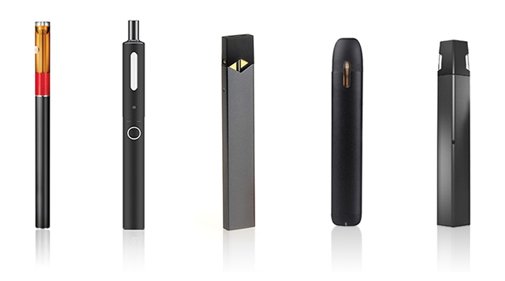Ollie Hunt, a Freshman studying Journalism, argues that the vaping epidemic is something that will continue to impact generations.
The Supreme Court ruled in favor of the Food and Drug Administration (FDA) and its ability to ban the approval of fruit-flavored vaping products on April 2. This decision comes from the FDA’s wide refusal to approve applications from companies looking to sell vape products that could be marketed toward teens. These marketing strategies could include nicotine devices with fruit flavors, candy flavors, and more.
The use of e-cigarettes and vapes has been an increasing epidemic since it gained such status in 2018. Vape technology was on the rise, with new devices popping up everywhere.
Currently, vaping addictions among high school and college students are rather normalized. It’s hard to go to a college campus and not see a few people hitting a vape or casually speaking about the next flavor they want. Those in charge think this is due to the fruity flavors that many companies provide to add to the experience. While that was the motive a few years ago, this is surely not the reason college students are still vaping, keeping the epidemic intact. Moreover, the FDA is responding to this epidemic in the wrong way and is responding too late to make any change.
In a survey sent out to Ohio University students, students were asked about their vaping habits. Of the 100 responses to the survey, 68% of students reported smoking or vaping. Of these students, 100% of them are underage. When asked when these students started vaping, all of the participants stated it was in high school or early in college.
Curiously, students were asked what their favorite flavor of vape was and what they would do if that flavor were discontinued. Of the 74 remaining responses, only 22.3% of participants said they would quit smoking. Others stated they would find a new flavor or move to a different device.
This survey shows the complete lack of knowledge that the FDA has about the current epidemic and how it is affecting young Americans. Young adults aren’t smoking and vaping because of the variety of different flavors anymore, they are addicted. The FDA can continue to deny these applications for fruit and candy-flavored products, which may curb the next generation of high school students, but this won’t stop the current generation from accessing and using these nicotine products. The addiction has taken root in these young adults and cannot be easily taken care of without the right action.
Not only is it common to vape at such a young age now, but it’s almost normalized. In high school, the bathroom was the solace for those looking to take a hit of their vape. When vape detectors were installed to curb any unwanted behavior and catch those breaking the code of conduct, I vividly remember peers and students complaining that it was “unfair” that these were installed. In reality, it wasn’t unfair. The administration was taking these steps to curb the use of vaping products. The cultural acceptance of vaping has just normalized it way too much for underage users. Teens are growing up without the maturity barrier.
This article was originally published by a www.thenewpolitical.com . Read the Original article here. .

